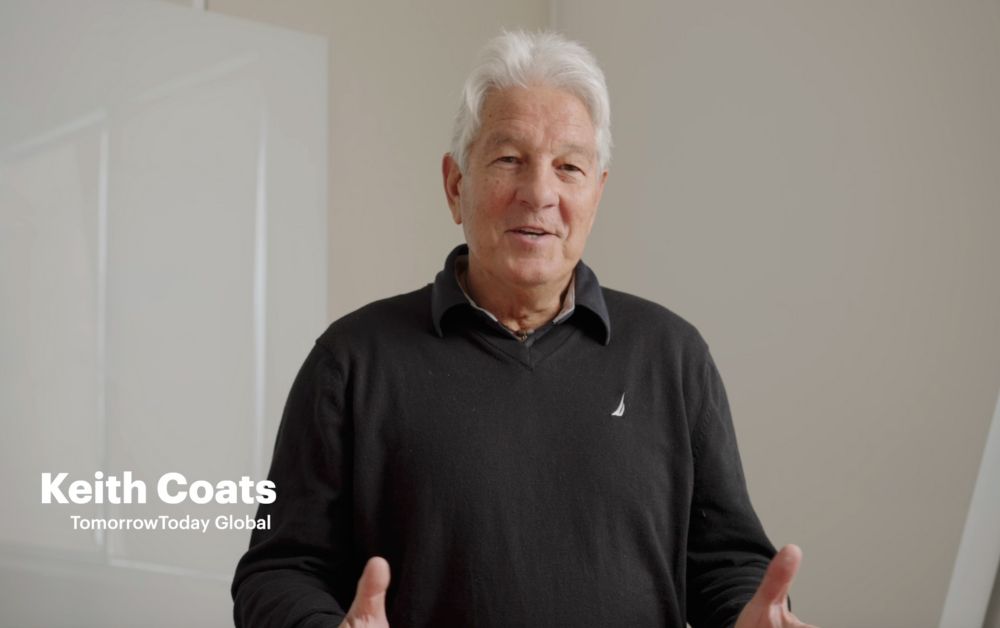Today’s insights are brought to you by my colleague and leadership thinker, Keith Coats.
Describing oneself as a ‘Futurist’ has its risks! On many occasions, I’ve had people look at me with a strange expression after they’ve asked me what I do…
On one occasion at Heathrow airport, on coming across ‘Futurist’ on my immigration form that he was routinely checking, the Immigration Officer stopped dead in his tracks. He looked up at me with renewed interest, checked once again what he had just read before looking up again with a hard to read expression on his face before asking, “Futurist hey, can you tell me who’s going to win the premiership then?” When I assured him, I couldn’t, he quickly lost interest and waved me through.
It’s a strange title, albeit rather simple. Being a ‘futurist’ doesn’t mean I’m able to predict the future by gazing into a crystal ball.
Succinctly put, being a futurist means that you “intentionally build the capacity to see the implications and meaning of change.” Of course, there are more impressive definitions than this one but for us at TomorrowToday, this is the one that makes sense and is easy to both explain and understand. There are several nuances to this simple statement.
Let’s dissect these aspects in order to add further insight and richness to what ‘thinking like a futurist’ means:
● Building the capacity: This is a process, much like getting physically fit. It doesn’t just happen in one session and requires both discipline and perseverance. It is in essence getting ‘future fit’. This is ‘intentional work’ and exactly how one does this will largely depend on constraints such as time, capabilities, and the people involved. It is something that can and should be measured over time and although there is ‘always more than can be done’ it does promise a point where it is both natural and seamless.
● See: This ‘seeing’ leads to ‘understanding’. It is a seeing of something that previously remained hidden or was out of sight. It is helpful to understand that ‘we don’t see the world as it is but as we are’. This means that identifying some of our own biases and lenses, the things that contribute to our ‘worldview’ is an important part of the ‘seeing’. Much like building capacity this is never-ending work and understanding the ‘subjectivity’ of our ‘objectivity’ is necessary and important in opening up conversations and discovering newer and deeper perspectives.
● Implications: The ‘implications’ can take two forms. One is ‘connecting the dots’. In other words, identifying how seemingly random events connect in an interconnected world. Another form of implication is to see it as ripples that emerge from a single event or innovation. Ripples spread from the centre and there is a certain pattern and predictability to them. Implications can be in the form of ‘random dots’ that need connecting or as ripples that need to be anticipated.
The implications of the work of futurists are perhaps the most open and problematic aspect of the process and of course ‘seeing the implications’ can require both imagination and an ability to ‘think outside the box’. Thinking ‘outside the box’ is greatly aided by firstly ‘thinking in the box’. When one is helping a team or business to ‘think like a futurist’ one should not make the assumption that ‘thinking in the box’ is an existing condition!
● Meaning: This really is the ‘sense-making’ part of the process. Here it is helpful to have access to frameworks and models that can be applied. The ‘sharpest tool in the toolbox’ for meaning is narrative or storytelling. An implicit and explicit appreciation for the role of the story is important. What stories do is provide context, content, coherency, connection and can be used as a catalyst for change.
Meaning is what the team doing the thinking brings to the process and is best understood as entirely subjective rather than objective. Meaning can both embrace and be impacted by experience. This can serve as both a hindrance and an enabler in attaching meaning to what is being seen and understood.
● Change: This is the overriding context for the futurist. Of course, the pace and extent of the change and disruption can and does vary but context is always important in framing the ‘thinking like a futurist’ process or journey. Using helpful frameworks to better understand the context and the prevailing change is useful but learning to live with change and uncertainty is the overarching context for futurists and in essence, forms the very ‘air that a futurist breathes’.
So what does it mean to ‘think like a futurist?’ The (very) short answer is:
To intentionally build the capacity to understand the implications and meaning of change!
If you’d like further resources and insights for your Adaptive Leadership journey, read more on our website or email Keith directly at [email protected]


